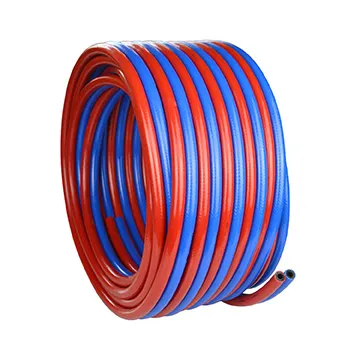lpg gas hose maximum length
LPG Gas Hose Maximum Length Understanding Safety and Regulations
Liquefied Petroleum Gas (LPG) is a popular fuel choice in many households and industries due to its efficiency and versatility. However, when using LPG, safety is paramount. One crucial aspect of ensuring safe LPG usage is understanding the maximum length of LPG gas hoses. This article delves into the factors influencing hose length, safety considerations, and regulations that govern it.
Understanding LPG Gas Hoses
LPG gas hoses are designed to transport gas from the storage cylinder to various appliances, such as grills, heaters, and stoves. These hoses are typically made from durable materials that can withstand high pressure and are resistant to corrosion. However, the performance and safety of these hoses can be compromised if the length exceeds recommended limits.
Factors Influencing Maximum Hose Length
1. Pressure Drop One of the primary concerns with longer hoses is pressure drop. As the length of the hose increases, the internal resistance to the flow of gas also increases, which can lead to inadequate pressure at the appliance end. A significant pressure drop can result in inefficient combustion, leading to incomplete burning of gas and the release of harmful emissions.
2. Purge Time Longer hoses require longer purge times before use, as they contain more gas that needs to be expelled before reaching the appliance. This can be inconvenient and inefficient, particularly in commercial settings where quick turnaround is essential.
3. Physical Damage Longer hoses are more susceptible to damage from various factors, including abrasion, kinking, and animal interference. A damaged hose can lead to leaks, which pose a serious safety risk, including fire hazards.
lpg gas hose maximum length

4. Regulatory Compliance Different regions have specific regulations regarding LPG hose lengths. Compliance with these regulations is crucial not only for safety but also to avoid legal issues and ensure that insurance policies remain valid.
Safety Considerations
When it comes to LPG gas hoses, safety should always take precedence. To mitigate risks, users should adhere to the following guidelines
- Adhere to Manufacturer Specifications Always refer to the manufacturer's recommendations regarding the maximum hose length for specific appliances. This information is crucial for safe and efficient operation.
- Regular Inspections Inspect hoses regularly for signs of wear, damage, or leaks. Any compromised hose should be replaced immediately to ensure safety.
- Installation and Maintenance Proper installation is vital for minimizing the risks associated with hose length. Ensure that hoses are installed in a manner that prevents kinking and abrasion. Regular maintenance checks should also be conducted.
Conclusion
In conclusion, understanding the maximum length of LPG gas hoses is critical for safe usage. The factors influencing this maximum length, including pressure drop, purge times, and potential damage, highlight the importance of adhering to regulations and manufacturer guidelines. By prioritizing safety, users can enjoy the benefits of LPG while minimizing risks. Always stay informed about the latest safety standards and ensure that your equipment is well-maintained for optimal performance. Remember, when it comes to LPG usage, safety should never be compromised.
-
Unrivaled Performance and Applications of PU Pneumatic Hoses and TubesNewsJun.11,2025
-
The Transparent World of Industrial Tubing and Hosing SolutionsNewsJun.11,2025
-
The Intricate World of Pneumatic Conduits: Tubes and HosesNewsJun.11,2025
-
The Dynamic Landscape of Pneumatic Conduits: Unraveling Key ComponentsNewsJun.11,2025
-
The Diverse Applications and Significance of Transparent PVC TubingNewsJun.11,2025
-
High - Pressure Pneumatic Tubing and Systems: An In - Depth LookNewsJun.11,2025














